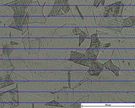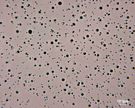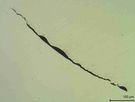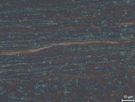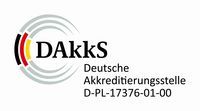Microstructure analysis
The inner structure of a material is called a microstructure. The properties of a material are essentially defined by the microstructure. Not infrequently, a poorly developed microstructure is the reason for the failure of a component. It is aimed at a possible homogeneous microstructure. Microstructure analyses are metallo-/ carried out materialographischen cuts that are etched to the contrasting of pattern of.
RIO GmbH conducts among others following analysis to the structure characterization:
Determination of Grain Size
The grain size is the designation for the statistical distribution of the visible size of individual microstructure constituents ("grains") in the polished surface.
At RIO GmbH we carry out grain size determination in accordance with international standards (DIN EN ISO 643, DIN EN ISO 2624, DIN EN ISO 4499, ASTM E112, …) on the basis of the intercept, counting, and comparison image methods.
Determination of Pore Size
Pores are hollow areas in the materials.
In cast materials a distinction is made between shrinkage porosity (shrinkage cavities) and gas porosity, in accordance with VDG P201. In sintered materials the pores are the remnants of the voids between the powder particles of the initial material. The porosity in polished sections is determined by digital image analysis.
Phase Portions
If a microstructure consists of grains of different types (concerning their chemical composition, crystalline structure, etc.) then we talk of differing phases. It is possible to distinguish between these phases by applying suitable etching procedures. The percentage fractions of the phases can subsequently be determined by digital image analysis.
Non-metallic inclusions
When metallic materials are produced, small non-metallic particles can be carried into them. However, in most cases they are most certainly not wanted. A low number and a small quantity of such inclusions thus indicate a high quality of the material. The content of neon-metallic inclusions (degree of purity) can be quantified in accordance with, for example,DIN 50602 (withdrawn) or DIN EN 10247.
Micro-cracks in Welds
Delta ferrite content in Austenit
Delta ferrite is characterized by the fact that it does not undergo an allotropic conversion. In austenitic steels it usually contains high proportions of chromium, resulting the adjacent microstructure being low in chromium and this no longer exhibiting adequate resistance to corrosion. Furthermore, delta ferrite can convert into the brittle σ phase. Delta ferrite can be made visible by suitable etching methods and so assessed.











